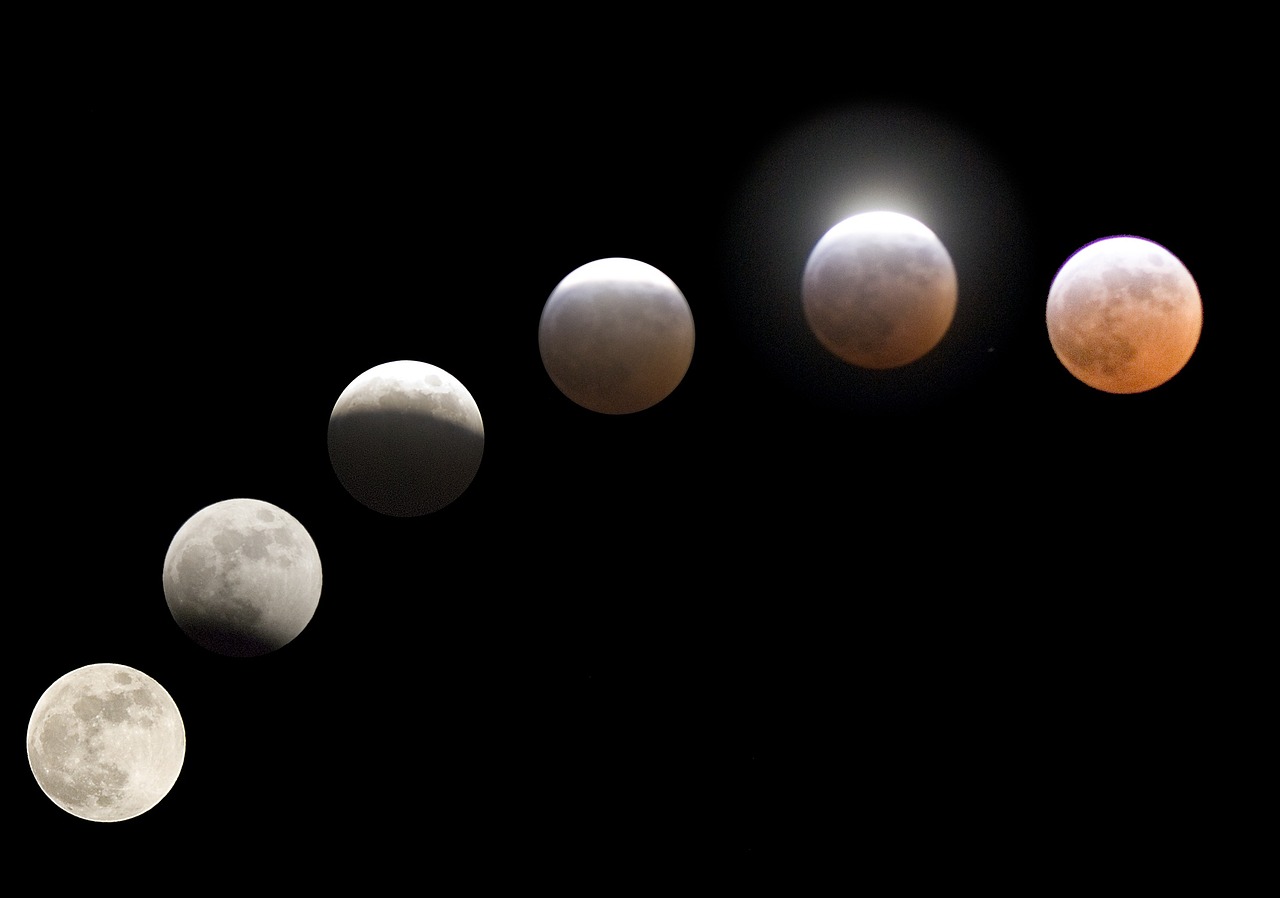The Islamic calendar is used by Muslims worldwide. They may live their day-to-day lives by the Gregorian calendar, but the Islamic calendar is where all the important religious events and festivals are. It has every important occasion from Eid to Hajj and serves as an anchor of faith for the Muslims in this fast-paced world. It is also called the Hijri calendar because the hijrah (migration) of the Prophet PBUH was kept as the starting point for it.
Narrated Sahl bin Sa`d:
“The companions of the Prophet PBUH did not take the day the Prophet PBUH was sent as an Apostle or the day he passed away as a starting date for the Muslim calendar. But they took the day that marked his arrival to Madina.”
How Does It Work?
The Islamic calendar is lunar. Which means that it follows the phases of the moon for changes between months. According to science, a full lunar cycle lasts around 29.5 days. This makes every Islamic month around 29-30 days long. And since every month has a maximum of 30 days, the Islamic calendar has a total of 354-355 days and is 11-12 days shorter than the Gregorian calendar.
The Significance
The wisdom and benefit behind the Islamic year being lunar can’t be ignored. Because the year is shorter than the Gregorian calendar and continues to move throughout the seasons, it allows Muslims to experience Islamic occasions and festivals across different seasons.
For example, the Gregorian calendar has fixed months for different seasons. Summer comes in June, while winter rolls around in late October. But that isn’t the case in the Islamic calendar. The Islamic months, whether it is Muharram or Dhul Hijjah, come in all four seasons as the year keeps moving 11 days backward every time.
This change in season makes it easier for Muslims living in extreme climates to fulfill their religious obligations. For example, if Muslims followed the Gregorian calendar, Ramadan would always occur in a fixed month. This would mean that if Ramadhan occurs in the summer in some country, it would simultaneously occur during winter in some other country. This would put the people in the summer countries at a disadvantage, as it is harder to fast in the summer due to the heat and humidity.
The Hijri Calendar & The Gregorian Calendar
The main difference between the Hijri calendar and the Gregorian calendar is the use of the sun and the moon. The Hijri calendar is lunar. Whereas the Gregorian calendar is solar. The Hijri calendar measures the amount of time it takes for the moon to go through all of its phases. They are new moon, waxing crescent, first quarter, waxing gibbous, full moon, waning gibbous, third quarter, and waning crescent. On the other hand, the Gregorian calendar measures the amount of time it takes Earth to complete an orbit around the sun.
Months Of The Islamic Calendar
Lo! the number of months with Allah is twelve months by Allah’s ordinance on the day that He created the heavens and the earth. Four of them are sacred: that is the right religion. So wrong not yourselves in them. And wage war on all of the idolaters, as they are waging war on all of you. And know that Allah is with those who keep their duty (unto Him).
Muharram
Muharram is the first month of the Islamic calendar and marks the start of the new Islamic year. It is also the first of the four sacred months ordained by Allah. Muharram is an Arabic word and is derived from the word “haram,” which means “forbidden.” This meaning encompasses all the themes of the month. It is so sacred that even fighting is prohibited during it.
Safar
Safar is the second month of the Islamic calendar. Some people say that it is called Safar because during this month, all the inhabitants of Makkah leave the city to travel. While others suggest that it is called Safar because the people used to fight with other tribes during this month, and they would leave whoever they met with sifr (zero) goods.
Rabi al-awwal
It is the third month in the Islamic calendar. It means ‘the first spring.’ Rabi al-awwal is the month in which our beloved Prophet Muhammad PBUH was born. The Rabi al-awwal of 2025 is expected to start on 24th August and end on 22nd September.
Rabi ath-thani
The fourth month of the Islamic calendar. This month marks the end of the first quarter of the Islamic year. The word ‘Rabi’ translates to ‘spring,’ while ‘Thani’ translates to ‘the second.’ This month is sometimes also called Rabi Al-Aakhir, which means ‘the last spring.’ In pre-Islamic times, it was common practice for people to name the months according to the seasons in which they occur. But since the Islamic calendar is lunar, the name of the month may no longer correspond to the weather conditions it once happened in 2025, Rabi ath-thani is expected to occur from 23rd September to 22nd October.
Jumada al-awla
The fifth month of the Islamic calendar. Jumada is derived from an Arabic word which means ‘dry parched land’ or ‘land devoid of rain.’ It is the month in which the Battle of Mutah occurred. In 2025, Jumada al-awla is expected to start on 23rd October and end on 21st November.
Jumada al-akhirah
It is the sixth month of the Islamic calendar. This month translates into ‘the last of the parched land.’ It is also a widely held belief that the daughter of the Prophet Muhammad, PBUH, Fatima RA, was born in this month. This month is expected to begin on 22nd November and end on 20th December.
Rajab
Rajab is the seventh month of the Hijri calendar and translates to ‘respect.’ This month is the second of the four sacred months in the Islamic calendar. Rajab is full of critical Islamic events such as the birth of Hazrat Ali RA and the journey of ascension to heaven (Al Isra Wal Miraj). Since this month is sacred, fighting is prohibited in this month.
Sha‘ban
Sha’ban marks the end of the second quarter of the Islamic year. It is the month before Ramadan, and it has numerous blessings for Muslims. It means ‘scattered’ or ‘dispersed.’
When someone asked Aisha RA about the Prophet PBUH fasting, she replied that she never saw the Prophet PBUH fast so much in any month other than Sha’ban.
Usamah bin Zaid said:
“I asked, ‘O Messenger of Allah, I do not see you fasting in any month as much as Sha’ban.‘ He replied, ‘That is a month people overlook, between Rajab and Ramadan, during which deeds are taken up to the Lord of the worlds, and I like my deeds to be taken up while I am fasting.‘
Ramadan
It is derived from the Arabic word ‘ramida’ or ‘ar-ramad,’ which means ‘scorching heat’ or ‘dryness.’ This is the month in which Muslims fast from Fajr to Maghrib (dawn to dusk). This month, the rewards for blessings are increased, and Muslims are encouraged to do as many good deeds as possible. It is also the month in which Laylatul Qadr (the night of decree) occurs.
The Prophet Muhammad said:
“Ramadan has come to you, a blessed month that God has commanded you to fast. During this month, the gates of heaven are opened, the gates of hell are closed, and the devils are chained. There is a night in it that is better than a thousand months, and anyone who is deprived of its goodness is truly deprived.”
Shawwal
The tenth month means ‘raised.’ Some say its name comes from the traditional practice of the Bedouin Arabs, as they would lift their belongings and travel. While others suggest that this month is the time when the female camel would be pregnant and raising the young camels. It begins with the first day of Eid al-Fitr. It is also the month in which the Prophet PBUH has prescribed fasting for six extra days.
Abu Ayub narrated that the Messenger of Allah (PBUH) stated, “Whoever fasts in Ramadan and then fasts in Shawwal for six days, then it is equal in reward to fasting every single day.”
Dhu al-Qa‘da
Dhu al-Qa’da is the third of the four sacred months, and fighting is also prohibited in this month. Sources say that Dhu al-Qa’da literally means ‘the month which is the possessor of sitting.’ This is also the month in which the Treaty of Hudaibiyah happened, which allowed the Muslims to perform the pilgrimage without any complications from the Quraish.
Dhu al-Hijjah
Dhu al-Hijjah is the last month of the Islamic calendar and the fourth of the sacred months. It is an Arabic term that means “Possessor of the Pilgrimage” or “The Month of the Pilgrimage,” and is the month in which the Hajj is performed and Eid al-Adha is celebrated. The first ten days of this month are incredibly blessed and provide an opportunity for believers to rise in their ranks.
It was narrated from Ibn ‘Abbas that the Messenger of Allah (PBUH) said, “The first ten days of Dhul-Hijjah are the days in which righteous deeds are more beloved to Allah than on any other days.” Hearing this, the people said, ‘O Allah’s Messenger PBUH, what about Jihad in Allah’s cause?’ He replied, ‘Not even Jihad, unless a man goes out with his wealth and himself and returns without bringing anything back.’

